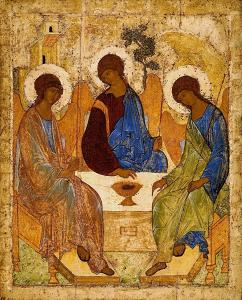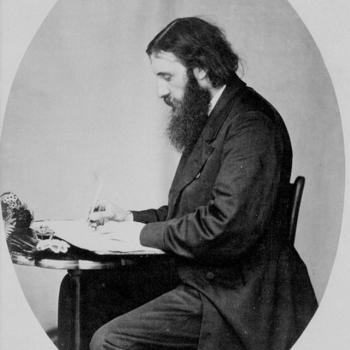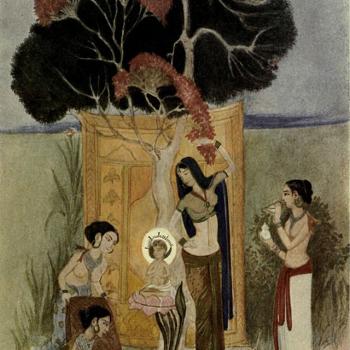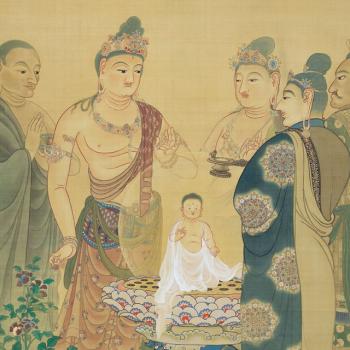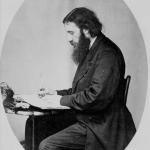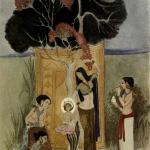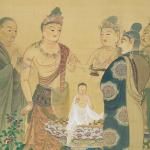Many years ago when I began to take night classes at the local community college in what would turn out to be the beginning of my “academic” life, one of my favorites was a survey of art history. The professor stated that his real goal for us was that we could go to a cocktail party and appear to know something about the broad swath of art.
I can’t say whether he succeeded in my case. I’m still awkward enough at such parties that I simply avoid them. But a lot of what he taught closing in on forty years ago has stuck here and there within my fading synapses.
For instance, I was wandering around Facebook this morning when someone mentioned how a prominent Zen teacher used to say he liked the idea of the Christian trinity, going so far as to say something like “all authentic religions have trinities.” It instantly sparked a recollection.
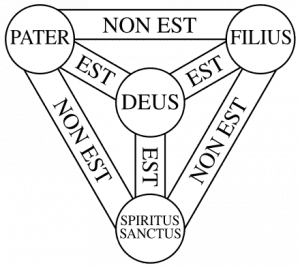 My art professor spent a bit of time with the Medieval image “Scutum Fidei,” the shield of faith. No one knows the precise origin of the image, but probably it emerges from about the twelfth century. The earliest certain version is found in an early thirteenth century manuscript of Peter of Poiters’ “Compendium Historiae in Genealoga Christi.”
My art professor spent a bit of time with the Medieval image “Scutum Fidei,” the shield of faith. No one knows the precise origin of the image, but probably it emerges from about the twelfth century. The earliest certain version is found in an early thirteenth century manuscript of Peter of Poiters’ “Compendium Historiae in Genealoga Christi.”
It’s basically a triangle with the three points usually enclosed in circles reading Father, Son, and Holy Spirit. In the middle was another circle labeled God. Each of the connections in the various directions were labeled either “Is” or “Is not.” And with that, a description of the mystery of the Christian image.
I can picture the professor standing next to the slide projection of the shield, tapping it and in a bit of a hush saying how it “Almost makes me believe.” He reiterated “almost,” and we moved on.
For whatever reasons, no doubt there are several, that picture and that “almost” both stuck.
As life would have it, in addition to my life long commitment to Zen and Zen practices, I would in time fall in among the Unitarian Universalists. The shorthand name for the community is Unitarians. It was a spiritual current in North America and England, an English speaking Enlightenment movement. There’s also a Reformation era religious movement in Hungarian speaking culture called Unitarian. But there was no significant connection between the two movements until the middle of the Twentieth century. The signal feature of that English speaking movement had to do with reason. It was also called rational religion (and sometimes liberal religion).
And as faithful to the rational, they noticed the scant direct and plain evidence for trinity in the scriptures, the only straight ahead reference to trinity was clearly an early Medieval interpolation, they rejected it as any sort of necessary doctrine. Their emphasis was on the ethical life, seeing Jesus as a moral guide, and salvation as a matter of living in accord with Jesus’ various teachings.
In the early Nineteenth century people who didn’t like these rational or liberal Christians, noted this thing about the trinity and called them out for it. Their epithet was Unitarian. It was meant to show these rational or liberal Christians were not much different than Jews or Muslims, the original Unitarians. The rationalists and liberals considered it, and decided not a bad crowd to be associated with. And they accepted the name.
All that’s history. Nothing to ignore. But. There is also now. And I suspect there’s a reason a fair number of contemporary Unitarian Universalist Christians consider themselves trinitarian. They often soften it by saying “lower case trinitarian.’ A term I’ve never unpacked to my full satisfaction.
Trinity is a passing strange thing. No doubt.
And it is my experience on the spiritual path we run into a lot of strange things.
In my own spiritual life as a practicing Zen Buddhist, I cannot say quite where I realized the purest formulation of Zen’s fundamental teaching that form is emptiness and emptiness is form, as precious and important as it is, misses something of our human encounter.
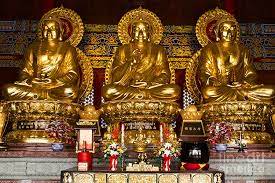 It was only when I felt into the Buddhist trinity, or, one of the Buddhist trinities, the mystery of the Trikaya that I found my path opening fully.
It was only when I felt into the Buddhist trinity, or, one of the Buddhist trinities, the mystery of the Trikaya that I found my path opening fully.
Here we have the two assertions of reality. The truth that nothing has a substance, that everything is wildly and completely open: Dharmakaya. The truth that everything plays out in causal relationships, constantly creating and falling apart, the realm of action and of history and of consequence: Nirmankaya. The mystery includes the absolute identity of these two, for the lack of a word, things. But, there is a third thing. That third. The truth of ecstasy, wonder, magic, and dream: Sambhogakaya.
Now, I feel no need to cram the two trinities into each other. As my friend the Zen student Dana Lundquist observed out of her own walking this path, “There are a lot of different true things happening at the same time.”
It is sufficient that they exist. Sufficient for my heart and the path I find myself following.
That said, there’s another image for the Christian trinity that I find wandering in and out of my dreams.
The image of the Christian trinity that has most touched my heart was an Orthodox icon created by a fourteenth century Russian artist, Andrrei Rublev. He used a story from Genesis of Abraham being visited by three angels and with that as his material creates a trinity image I find haunts my dreams. It includes languid humans sitting around a table. There are within it unseen triangles and circles that cannot be contained within the painting. Beyond that the play of images and colors that we can encounter simply seep into the preconscious heart and envisions, again, something that the mere painting cannot hold. Mere words. Mere actions. But without disdaining those mere things.
I really like that.
I, well, I really believe that. Shinjin. Trusting heart.
Mystery piled upon mystery.
We don’t know it. We can’t grasp it. We can only open to that mystery.
But its not actually that hard.
It is, after, all the calling of our human hearts.
The reality on the other side of our knowing.
Our true home…


